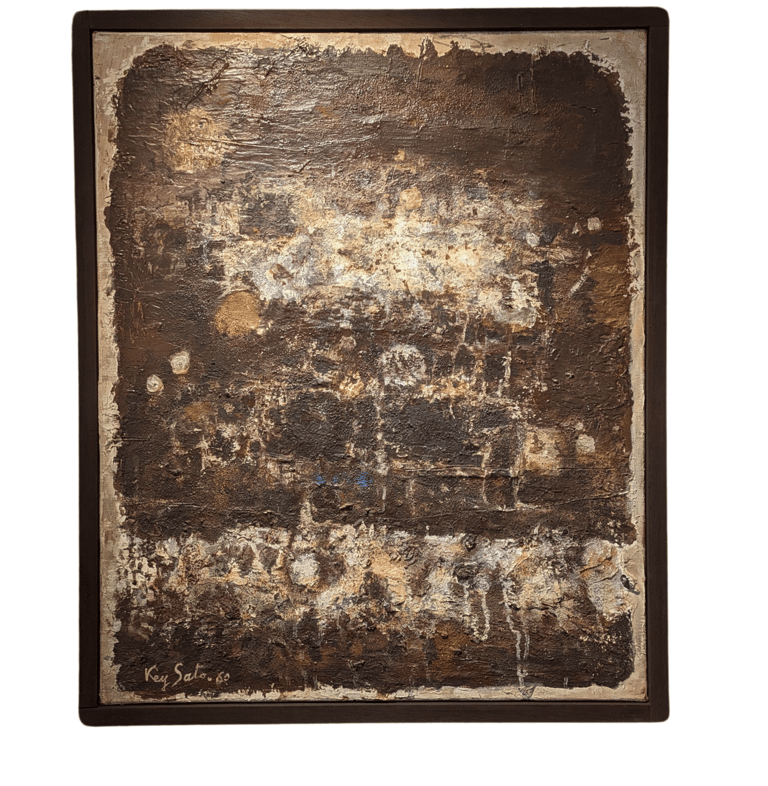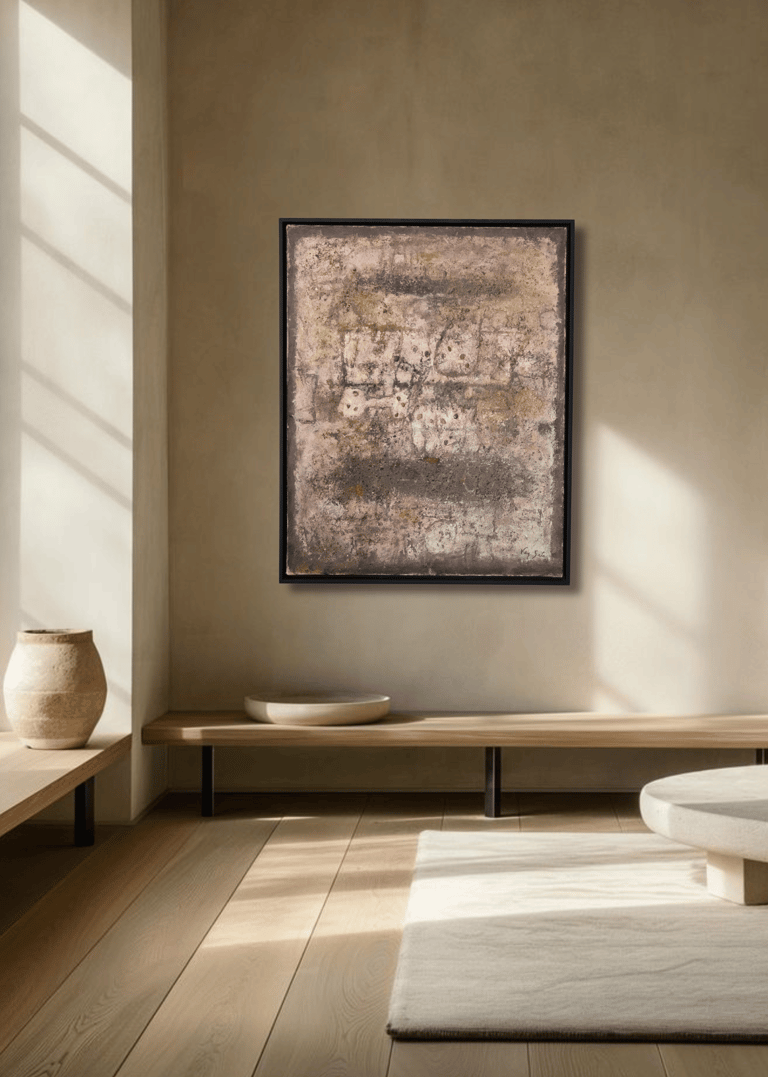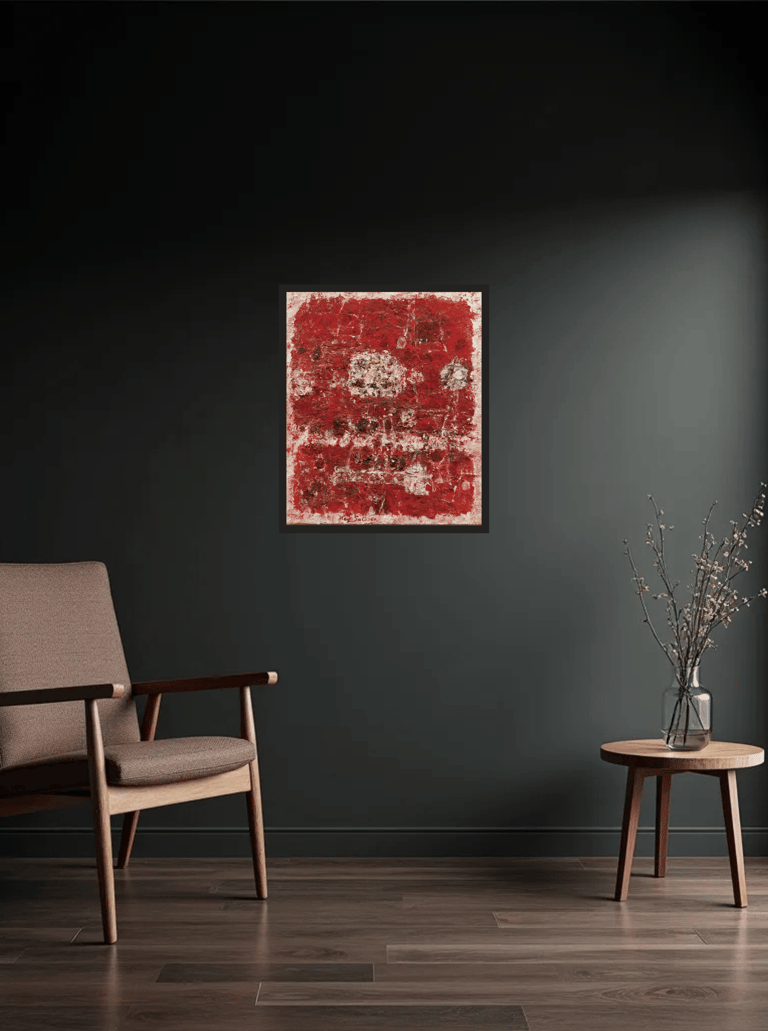KEY SATO
佐藤敬
You didn’t come this far to stop
Pioneer of Japanese lyrical abstraction
Key Sato (佐藤敬) was born in Oita in 1906. After training at the Tokyo School of Fine Arts, he moved to Paris in 1931, where he attended the Académie de la Grande Chaumière and immersed himself in the European avant-garde. Influenced by Fauvism, Cubism, Matisse and Picasso, he developed a singular visual language, at once free and deeply rooted, nourished as much by the currents of lyrical abstraction as by a profoundly Japanese spirituality.
But what really sets Key Sato's work apart is his intimate relationship with the mineral world. Ancestral stones, burnt rocks, driftwood trunks and gnarled roots become the silent models for his paintings. These natural elements, picked up on his walks, are the objects of his pictorial meditations. They guide not only his imagination, but also his “naturalist” palette: deep blacks, mineral whites, earths, yellow ochres, browns, sometimes purples.
He draws his inspiration from a certain reverie based on the telluric world, the titles of his works being directly inspired by this geological universe: Le rite de la pierre, Lumière dans la terre, Carrière de l'espace, Soleil axial... he himself writes: “I am attached to the navel of the world”.
His work, which is still rare on the market, is held in major public collections, including the Musée National d'Art Moderne - Centre Pompidou, the National Museum of Modern Art in Tokyo, and other institutions in Japan, Europe and the United States.
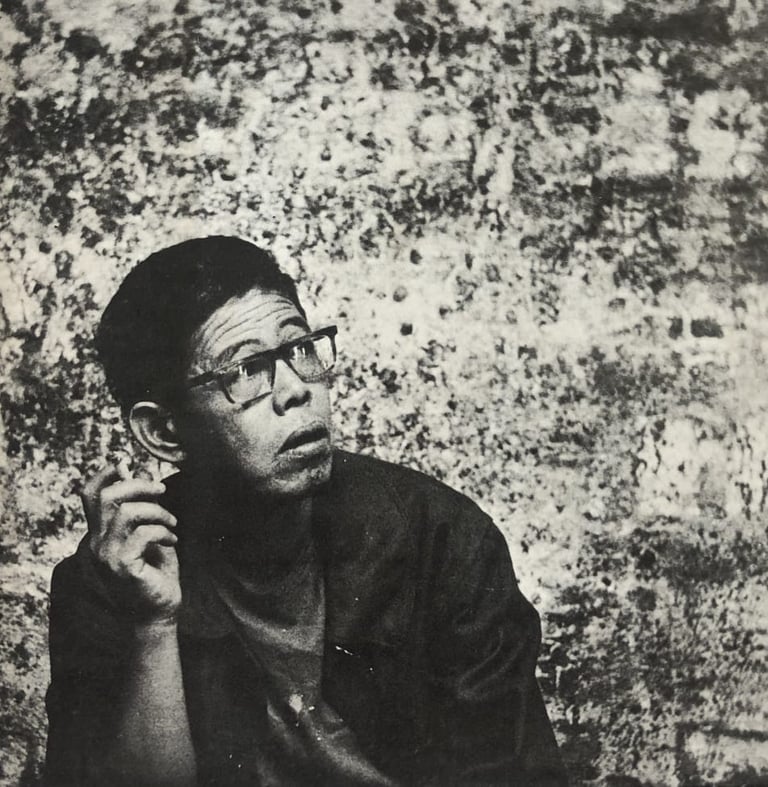

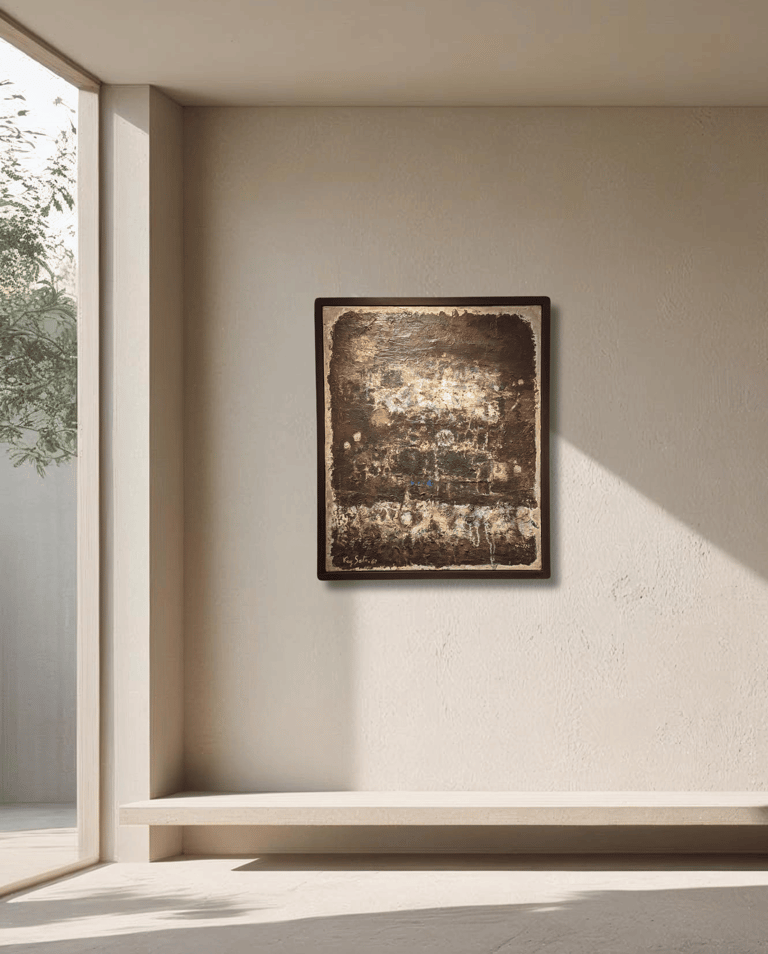

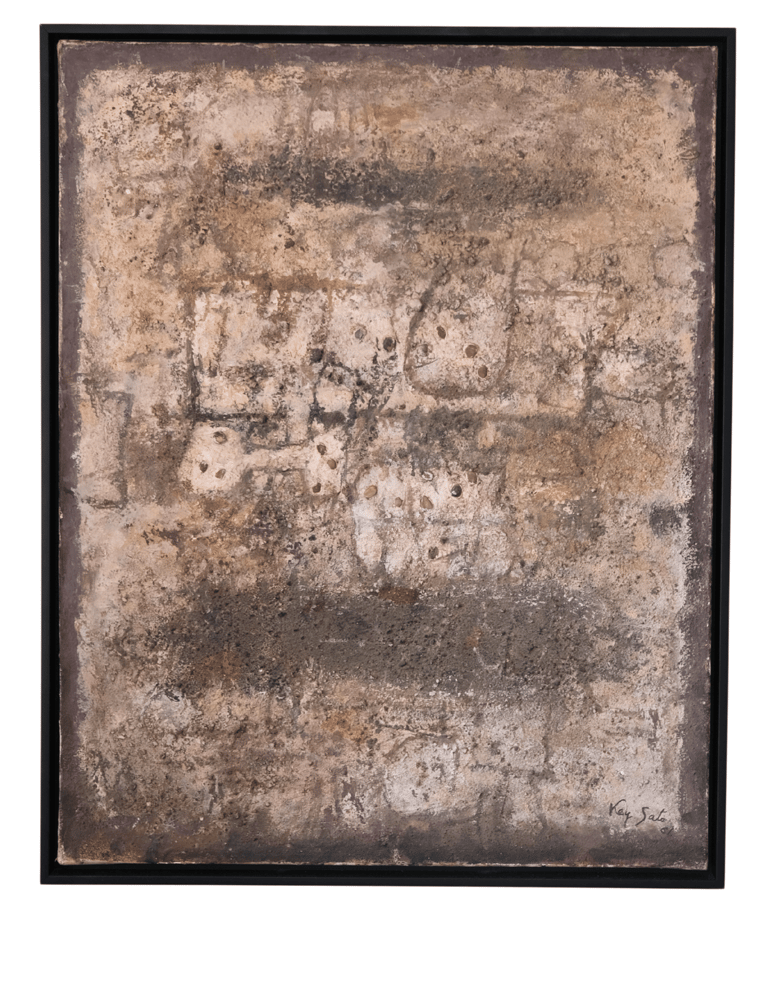

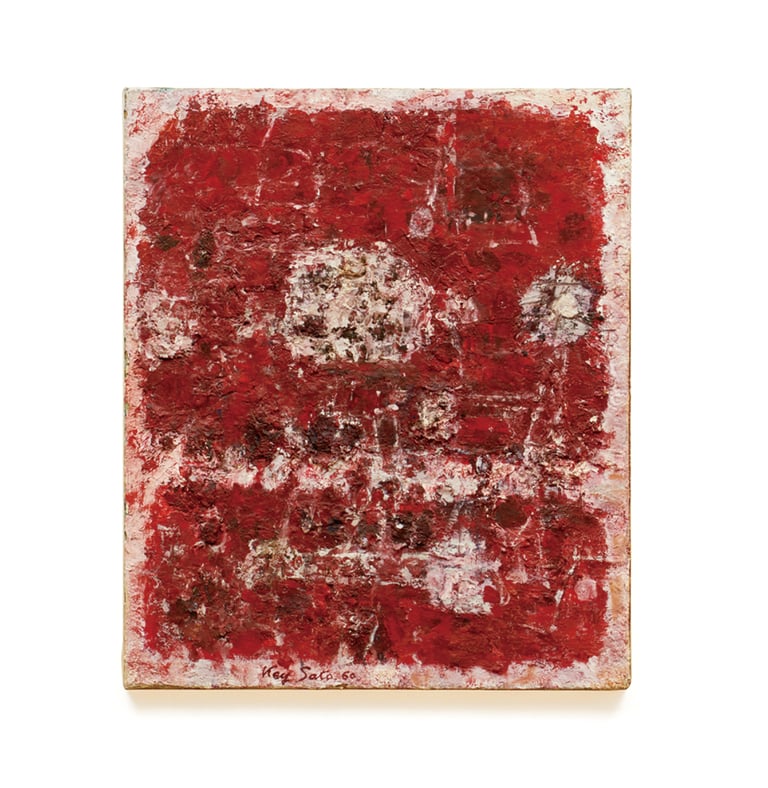

Lumiere brisée (1960)
73 x 60 cm
Untitled (1960)
55 x 46 cm
L'épithaphe (1961)
92 x 73 cm
